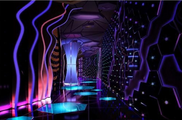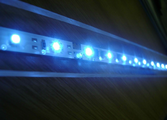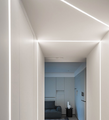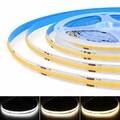What is the reason why the LED light source turns black?
What is the reason why the LED light source sometimes turns black? Today, the editor of the LED strip factory is here to discuss it with you!
Oxidation:
Silver will easily react with oxygen in high temperature and high humidity environments to form black silver oxide.
2. Vulcanization, chlorination, bromination:
The silver-plated layer on the LED bracket will generate silver sulfide when exposed to sulfur-containing gases, and will generate light-sensitive silver halide when exposed to acidic nitrogen-containing chlorine and bromine gases, which will cause the light source to blacken and fail. Light source sulfur/chlorine/bromide may occur in every aspect of the production, storage, aging, and use of LED strip light light sources and lamps. After the blackening of the light source is diagnosed as sulfur/chlorine/bromide, the customer must choose a specific sulfur removal plan based on the stage of sulfur/chlorine/bromide occurrence.

3. Chemical incompatibility:
Blackening of LED light sources may also be caused by chemical contamination. This blackening phenomenon often occurs in sealed lamps with little or no air movement. When it is confirmed that the blackening of the light source is caused by chemical compatibility issues, the customer will be advised to conduct a chemical incompatibility check on the materials used in the lamps to identify materials that are incompatible with the light source. Frequently encountered problems.
However, the blackening of the light source is only superficial. Sulfurization, chlorination, bromination, oxidation, carbonization and chemical incompatibility will all cause the blackening of the LED light source. Due to the lack of professional testing equipment and personnel, most LED companies usually rely on experience and guesswork when conducting blackening failure analysis, lacking scientific testing data.
4. Carbonization:
Speaking from experience, the material shortcomings of the six major raw materials of LED strip light light sources (chips, brackets, die bonding glue, bonding wires, phosphors, and packaging glue) and the three major packaging processes (chip bonding, wire bonding, and glue potting) Process defects may cause the light source to generate extremely high temperatures, causing part or all of the light source to blacken or become carbonized. Unreasonable heat dissipation design of LED lamps, low thermal conductivity of heat dissipation materials, unreasonable power supply design, and too many reflow soldering defects can also cause carbonization of the light source.





